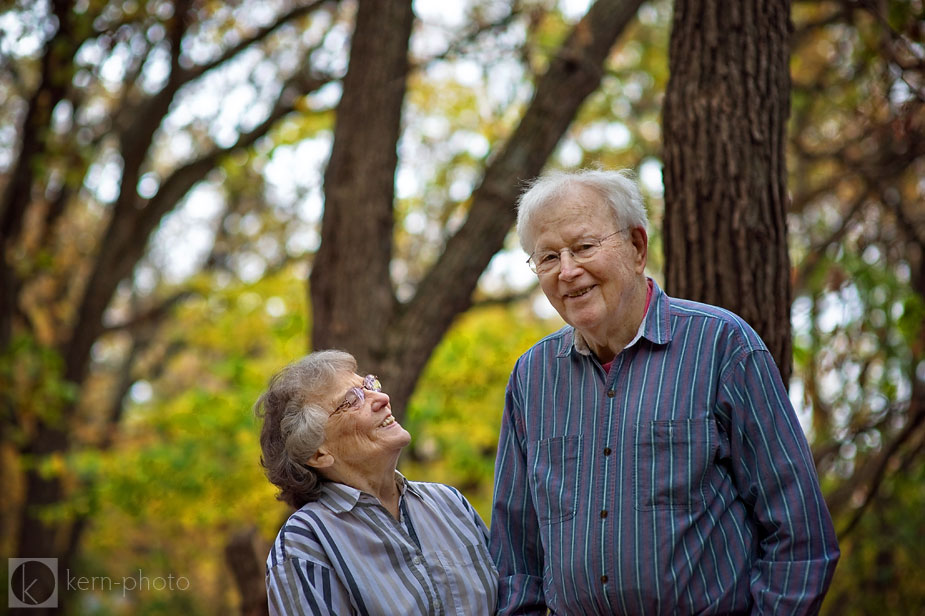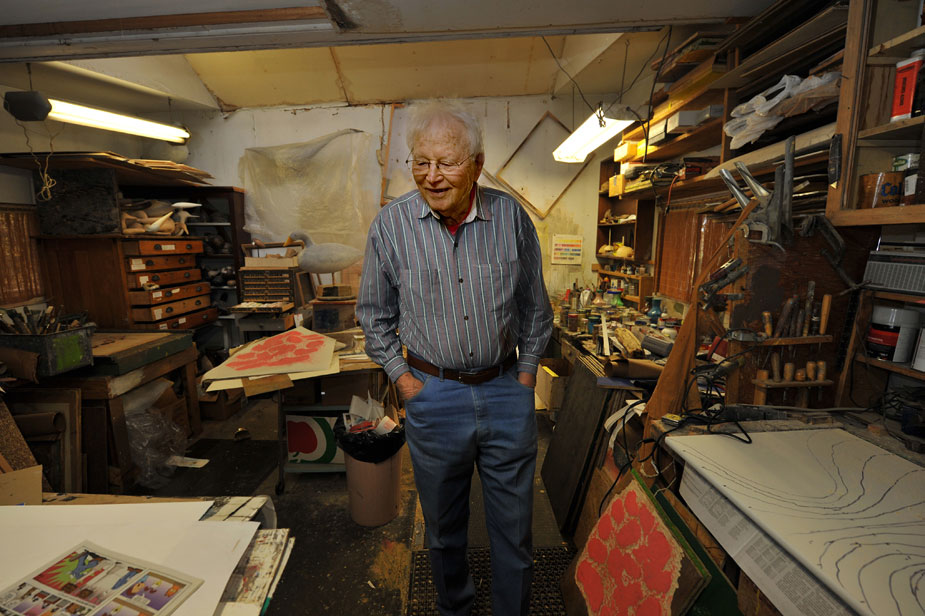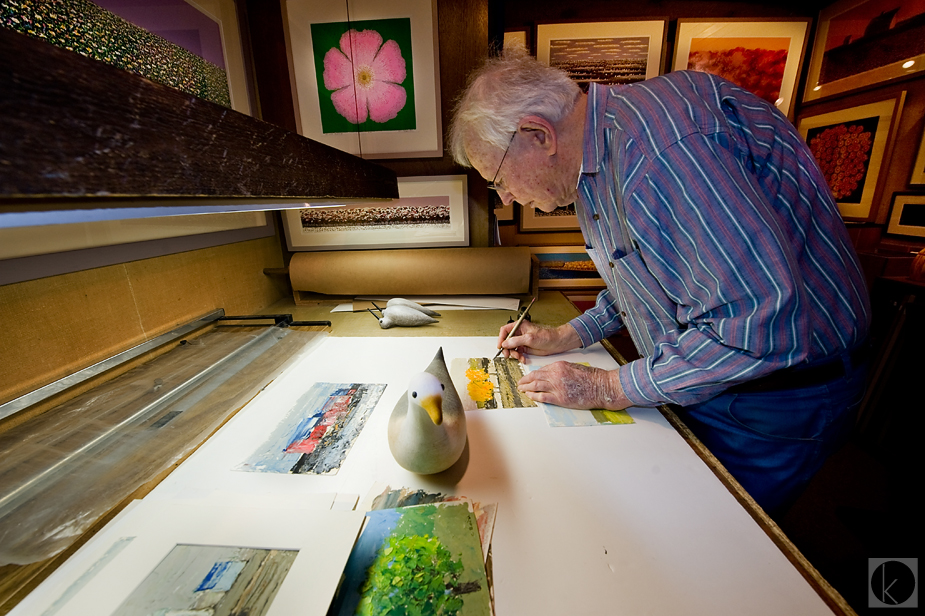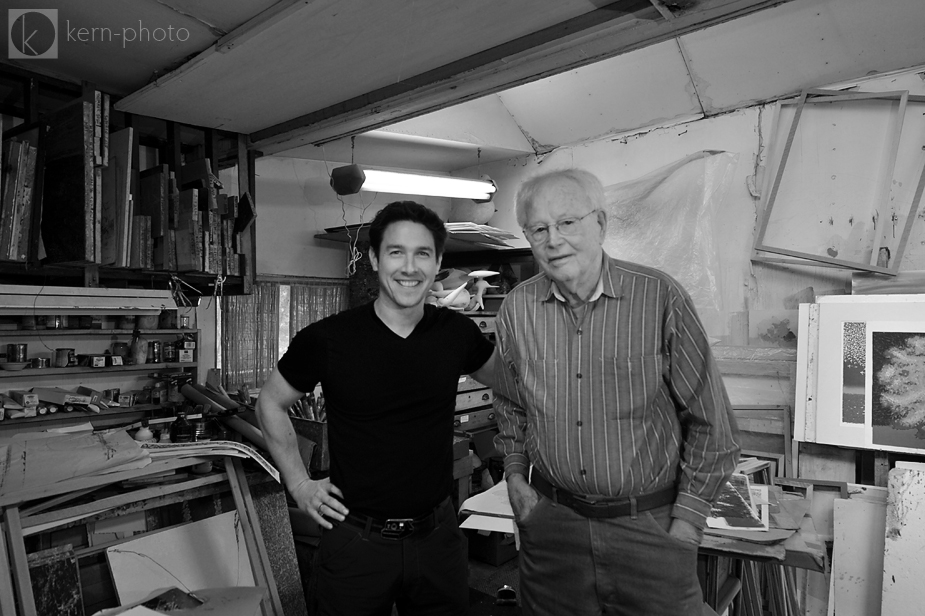5 Lessons from Artist Charles Beck
Injecting theory into art doesn’t make it better. But aesthetics sure goes a long way.
Every artist wants to makes good art. Whether by critical acclaim, a Whitney solo show, or a sold-out show hanging in a coffee shop, it’s impossible to follow a recipe for success in the art world. Now, if you are wrapping up a semester in Critical Art Issues of Modernity, you might think different. Which is perfectly fine if you do it for the grade to boost your GPA. But when you are pushing 90, happily married, and still producing gallery-quality work like Charles Beck… an emerging artist could only dream for this DNA match.
This image of Mr. Beck and his wife, Joyce, sharing a moment at their home in Fergus Falls, MN simply makes makes me happy:

They invited my wife and I into their home. Over home-made brownies and coffee, we talked about marriage, art, and life. Joyce plays a best supporting role for Mr. Beck and exemplifies Minnesota Nice with a warm smile and a good story.
“She takes care of the numbers,” he says. They make such a cute match, reminding me once again why I love to take photographs of couples in love.
A Portrait of an Artist
Straight up, I asked Beck what he thinks makes a work of art.
“True art elicits a feeling.You feel art. You don’t explain it.,” he says.
I felt like a young Skywalker in Yoda’s presence: “Do… or do not. There is no try.”
 I could extract many lessons from our brief time together. I share five secrets from Beck’s fountain of youth:
I could extract many lessons from our brief time together. I share five secrets from Beck’s fountain of youth:
1. Unplug, connect with nature.
Beck needs nature. He’s not dominated by it, yet nature often springboards his work, especially the horizon and the sky. He encourages artists to wander, explore nature. His fear? Upcoming generation won’t share in experience while plugged into their devices.
2. Think long-term.
Beck is a living classic. He received his MFA from University of Iowa in 1950. That’s before my folks were born. And he’s still creating woodcuts and paintings inspired by Fergus Falls, MN; surrounded by textures of nature, the horizon, and a Lake Wobegon simplicity.
As he approaches his 90th birthday, Beck remains active in his home studio. Beck says,
“Your profession should be something you yearn to do. So often, people dream to retire and do nothing. That is a dead end street.”
3. Learn to ‘See’ for yourself.
Be conscious of what you are seeing and how you are seeing it, cautions Beck. The more you look, the more you see. Beck has been around the block teaching art… by about three decades or so. When he speaks, we listen:
I have been influenced by formal training. But, in the process of going to school you are begging to admire other artists’ work and there’s a danger that you will let someone’s work influence yours. So your own work becomes not your own, but kind of a combination of approaches. I’ve looked back at some of the work I did when I was working under the influence of other artists and I feel less strongly about that work.
{Editorial note: Which is probably why it’s not a good idea to follow lots of photographer artist blogs.}
The subject shouldn’t determine the excitement in a painting, but ‘seeing’ differently. Beck continues:
Most people want something exciting to paint, so they always think in terms of mountain peaks or the sea shore or waterfalls which are exciting to look at. But it’s not necessarily any more exciting than an old barley field in Minnesota. It depends on how you look at it and what you see.
Same rules apply in photography. Lots of parallels here, folks.

4. Make mistakes.
In the process of making art, creative mistakes happen. The key is roll with them. So goes the creative process no matter if your medium is watercolor, aircraft welding, or portrait photography.
Beck continues:
You say, “My gosh this isn’t what I wanted at all!” Then maybe you look at the proof and you say, “Hey this is better than I wanted.” You have to be receptive to something that happens, an accident in the process of trying to do what you wanted to do. That’s what makes it interesting.
In my own work, it’s not rare to start with an idea, yet ending up with different a result through exploration. Proof work or sketches help document the creative thought process. This becomes especially helpful when the fountain of creativity runs dries. Sketches on the back of a napkin, once revisited, can serve as a launching point to a fresh creative concept.
5. Learn to be an artist.
A teacher can make or break a student’s interest in any topic. As a personal note, I’ve had classes in college that I worked off my keister for a “B” and swore I’d never be an artist. And one of those classes happen to be photography (go figure). I can only imagine my professor reading this blog post, a dozen years later.
Says Beck:
You can’t teach people to be artists. If they think they really want to be an artist, you can help them, encourage them, expose them to things. You can show them things about their work. But art is something you have to want. A teacher can hurry the process of learning some of the basic things art is all about, things you would ultimately find out for yourself. I think teaching art has to be done very subtly; you can over-teach and maybe actually destroy a person’s artistic potential.
In sum, don’t fret about theory. And don’t just copy your mentor’s style.
“Art is about seeing qualities you had never been aware of before; a nice line, a nice shape, a nice spatial relationship with colors,” he advocates. “No question that the right person can help you a lot, not by teaching you his technique but by making you see and relate what you see to your own work.”
As a student of visual arts in college, I still cringe from professors preaching art projects must address some sort of ‘fundamental issue.’ So refreshing to hear in the art world it doesn’t have to be that way.
To Beck, at the end of the day: “All that really matters is that I like it.”
Charles Beck is represented by Kaddatz Galleries and the Grand Hand Gallery.






Pingback: (Geo)Graphic Animal Portraits » Kern-Photo - Kern-Photo
Pingback: NEWVEMBER {ecce gallery} - Kern-Photo - Kern-Photo